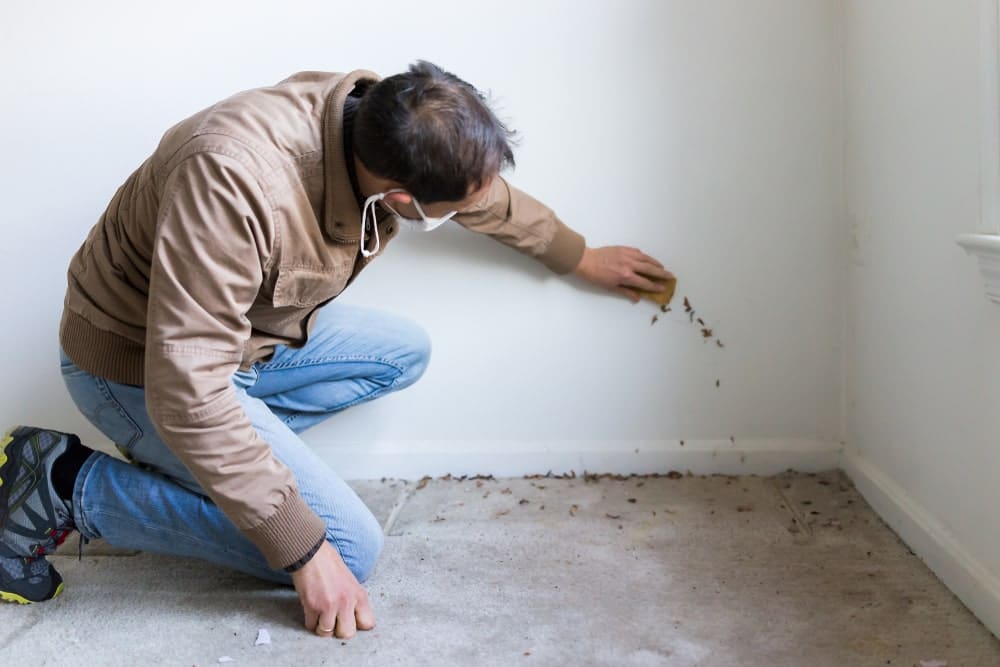When it comes to mold, there is always more than what meets the eye. In addition to the most obvious places like the foundation, roof shingles, and your kitchen, there are places where mold can develop without your attention. Mold can be sneaky and often goes undetected until it is too late. Here are some places where you might find mold around your house:
Air conditioner: Air conditioners are the perfect environment for mold to grow. The warm, moist air that circulates through the unit provides an ideal breeding ground for mold spores. It is a sign of mold if you notice musty odors coming from your AC unit. A report published by the National Air Duct Cleaners Association found that over 50% of AC systems tested had mold growing in them. To get rid of mold within your air conditioner, it is crucial to plan regular duct and vent cleaning.
Chimneys: Most homeowners don’t even think of chimneys when they think of mold. Mold grows in the chimney because it is constantly exposed to water and moisture. Bricks and mortar in the chimney provide a perfect surface for mold to grow on. To get rid of the mold on chimneys, you can either hire a professional chimney sweep or do it yourself.
Washing machine: Washing machines are another place where mold can grow without your knowledge. The warm, moist environment inside the washing machine is perfect for mold to thrive. If you notice musty odors from your washing machine, it is a sign that mold is present. Mold within the washing machine can pose a severe problem for people with allergies or asthma. To get rid of mold in your washing machine, you should clean it with a bleach solution regularly.
Refrigerator Drip Pans: Refrigerator Drip Pans are regularly exposed to moisture, making them susceptible to mold growth. The Drip Pans are located under the refrigerator and catch any water that leaks from the fridge. Make drip pan inspection a regular part of your home inspection, and clean the drip pans regularly.
Window Sashes and Seals: Mold love windows. As something that protects your house from the elements, windows are regularly subject to high moisture levels. The windows in your home provide the perfect environment for mold to grow. The best way to prevent mold growth on windows is to ensure they are properly sealed and caulked. You can do this during the initial installation or hire a professional to seal your windows.
Dishes: There is a reason why so many people ask you to wipe your dishes before putting them into the sink. Wiping your dishes helps to remove any food particles that might be left behind. These food particles can mold and mildew if they are not removed. In addition, it’s also important to wipe your dishes after cleaning. Keeping your dishes as is without properly wiping them down will only promote mold overgrowth.

Wallpapers: The goal of a wallpaper is to add decoration and aesthetic appeal to your home. However, wallpapers can also provide the perfect environment for mold growth. Wallpapers are often made of paper or other materials susceptible to mold. If you notice any mold on your wallpaper, it is important to remove it immediately. You can hire a professional to remove the wallpaper or do it yourself.
Carpets: Something similar to wallpapers, but mold can be grown in your carpets too. Carpets are made of materials susceptible to molds, such as wool or nylon. In addition, carpets are also known to trap moisture underneath them. A high number of industry professionals report finding mold under carpets. And since these are out of sight and require an entire overhaul, it can be tough to clean them.
Attics: Most homeowners never even think to check their attic for mold. However, attics are often humid and moist, which makes them the perfect environment for mold growth. If you notice any mold in your attic, it is important to remove it immediately.
Garages: Garages are another place where mold can grow without your knowledge. The warm, moist environment inside the garage is perfect for mold to thrive. If you notice musty odors coming from your garage, it is a sign that mold is present. Mold within the garage can pose a severe problem for people with allergies or asthma. To get rid of mold in your garage, you should clean it regularly and avoid hoarding too many items.
Out of sight, out of mind is a dangerous approach for tackling mold overgrowth. The next time you think about mold, consider these hidden places in your house that might be vulnerable to mold growth. Add these places to your regular cleaning routine and check for any signs of mold. If you find any mold, remove it immediately to prevent the problem from worsening. And remember, DIY mold repairs will only wreak more havoc. So, the best way to tackle mold overgrowth is to consult an industry professional.


